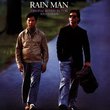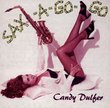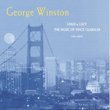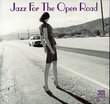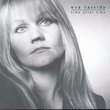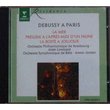| All Artists: Sibelius, Jansons, Oslo Philharmonic Title: Sibelius Symphony No. 1; Karelia Suite; Finlandia Members Wishing: 0 Total Copies: 0 Label: EMI Classics Imports Release Date: 2/27/2001 Genre: Classical Styles: Forms & Genres, Theatrical, Incidental & Program Music, Symphonies Number of Discs: 1 SwapaCD Credits: 1 UPC: 077775427325 |
Search - Sibelius, Jansons, Oslo Philharmonic :: Sibelius Symphony No. 1; Karelia Suite; Finlandia
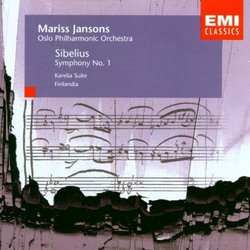 | Sibelius, Jansons, Oslo Philharmonic Sibelius Symphony No. 1; Karelia Suite; Finlandia Genre: Classical
|
Larger Image |
CD DetailsSimilarly Requested CDs
|
CD ReviewsSibelian to the Core William J. Finn | 08/24/1999 (4 out of 5 stars) "This collection of Sibelius compositions is the best I've heard in a long time. The music of Jean Sibelius has been standard repertoire since the 1930s. However, not since the days of John Barbirolli, Sir Thomas Beecham and Serge Koussevitzky have so many champions of Sibelius come to the forefront to record the beautiful strains and sounds of the legendary composer. Most notable among these Sibelius advocates are Scandinavian conductors, chief among them Esa-Pekka Salonen, Jukka-Pekka Saraste, Paavo Berglund, and - of course - Mariss Jansons. It is often forgotten that during Sibelius' lifetime, and for a couple of decades afterwards, many Scandinavian musicians were reluctant to perform Sibelius, because they had felt a need to emerge from the very formidable penumbra of his omnipresence. Remember that during his own lifetime, Sibelius' popularity so dwarfed those of Carl Nielssen and Kalervo Tuukkanen that Jean Sibelius was not only the "Voice of Finland," but indeed "The Voice of Scandinavia." Fortunately, for us listeners, the Scandinavians once again seek to promote Sibelius rather than leaving it to auslaender such as Lorin Maazel, Vladimir Ashkenazy and Eugene Ormandy (all excellent Sibelius interpreters). Here, Jansons and the Oslo Philharmonic register two (out of three) very striking, individualist performances that have helped to propel this Norwegian conductor into the forefront of the musical world. The Karelia Suite opens this disc, and is a beautifully bittersweet and austere rendition. Jansons places primary emphasis on the low strings in communicating this trio, based on the Finnish national literary epic The Kalevala. The most succinct and gripping of these is the second, Ballade, which features a lonely, wistful English horn solo by Havard Norang, held aloft subtly by the undercurrent of the strings (to which Jansons pays particular attention, which would have pleased Sibelius himself, having been a violinist). Sibelius' First Symphony, written in 1899, represents the composer's second effort in this medium (the first was his "Kullervo" Symphony, Op. 7). First appearing the same time as Sergei Rachmaninoff's own First Symphony, it is important to note how both of these composers' first serious forays into the symphony bore the unmistakable imprint of Tchaikovsky's influence. Yet, even more fascinating is how Sibelius and Rachmaninoff would themselves both emerge from Tchaikovsky's influence to create radically different compositions - Sibelius, finding at last his "way," and Rachmaninoff single-handedly taking up the banner of Romanticism into the twentieth century. As the Symphony's first movement (Andante ma non troppo - Allegro energico) opens with an equally bittersweet and understated clarinet solo (by Leif Arne Pedersen), the orchestra quickly makes its presence felt, especially through the timpani and brass, which are very forceful without being overwhelming. Here, Jansons does a better job than anyone I've heard in conducting this symphony in its Sibelian context, rather than letting it be engulfed by its Tchaikovskian roots. This movement, as conducted by Jansons, is a brilliant foreshadowing of things to come in Sibelius' Second Symphony: He deftly handles the subtle orchestral colouring of this movement, in which he lets harps, flutes and the pizzicati of the upper strings range freely underneath the movement's theme, which is carried on the clarinet and refrains on the English horn. This seems to hearken to Sibelius' method of "fragmentary" composition, i.e., writing thematic "strands" which later weave themselves into an intelligible whole. In the second movement, Andante (ma non troppo lento), the movement opens up gently, lyrically, like waking up late on a clear Sunday morning. Jansons moves from the languorous introduction, by pacing the basses, punctuating the theme firmly and insistently (which itself looks forward to the opening passage from the Tempo andante, ma rubato in the Second Symphony). The orchestra then imperceptibly moves with ferocity into the movement's middle allegro passage and then backs out just as subtly from the vivacious interlude into a restatement of the reticent opening theme. Before reviewing this disc, I hooked up a new pair of Klipsch speakers to the amplifier, and the third movement (Scherzo: Allegro) makes me glad I bought them (my other monitors are ADS L-880s, themselves not too shabby); the timpani pounds out of the speakers, giving one the "you are there" feeling of being in a concert hall. Here, one can hear the influence of Tchaikovsky's Fifth Symphony in the brass interlude - melancholic, somber, with much legato. The finale (quasi una Fantasia) is the most profoundly influenced by the Russian romantic, at time echoing the finale from the Fourth Symphony, at others Francesca da Rimini. Yet, in the phrasing on the woodwinds, this movement is uniquely Sibelian. Jansons opens the movement powerfully on the upper strings and low brass. (Interestingly, the opening theme is interrupted by an upscaling string tremolo which itself had been "lifted" almost 50 years later by film composer Franz Waxman for his score for the "film noir" classic Sorry, Wrong Number). Jansons masterfully counterbalances the woodwinds and the low strings in this movement, which lead to a placid, yet eloquent theme - disquieting, yet splendorous. The movement is conducted beautifully and majestically by Jansons, thoroughly convincing, ending triumphantly. In this recording, Jansons and the Oslo Philharmonic have successfully tackled the awesome task of performing this both as a Romantic and Sibelian piece. I wish I could say the same for their recording of Finlandia. Unfortunately, this piece is one of those "war horses," which many conductors seem to just rush through quickly. It is a competent rendering, but that is all I can say on its behalf. Unlike their performances of the Karelia Suite and the First Symphony, Jansons and the Oslo Philharmonic do not inspire with their version of Finlandia. The omnipresent timpani of the First Symphony here seem to be hiding in the green room, their sound just "swimming around" the rear of the concert hall. One wants to jump into the music and give the percussionist a set a hard mallets. Yet, their recording of Finlandia aside, Mariss Jansons and the Oslo Philharmonic get a 4.0/ 4.0 for their brilliant, original recordings of the Karelia and the First Symphony. Heartily recommended." Nearly Barbirolli William J. Finn | Sarasota Florida | 03/12/2002 (4 out of 5 stars) "Jansons is an excellent conductor of Sibelius, no question. I will leave discussion of his wonderful rendition of the Sibelius First Symphony to others. It is the Finlandia on this disc that I truly love. One of the things I have come to admire about this conductor is his way with making 'warhorses' sound new to me, and his Finlandia is no exception. The sound quality is truly exceptional, but the Oslo Philharmonic's recording venue does have a somewhat harsh acoustic. Still, the performance and the tempos give this particular Finalandia an edge I think." Finlandia: a little fast for my liking. Anton Karidian | Toronto | 07/01/2009 (2 out of 5 stars) "The Finlandia is a bit fast for my liking...I guess I prefer the sentimental rich slow Ormandy-esque versions. This one just doesn't stir the emotions...they kind of music that gives one the "lump" in the throat emotional (nationalist) feeling piece is associated with."
|

 Track Listings (8) - Disc #1
Track Listings (8) - Disc #1
